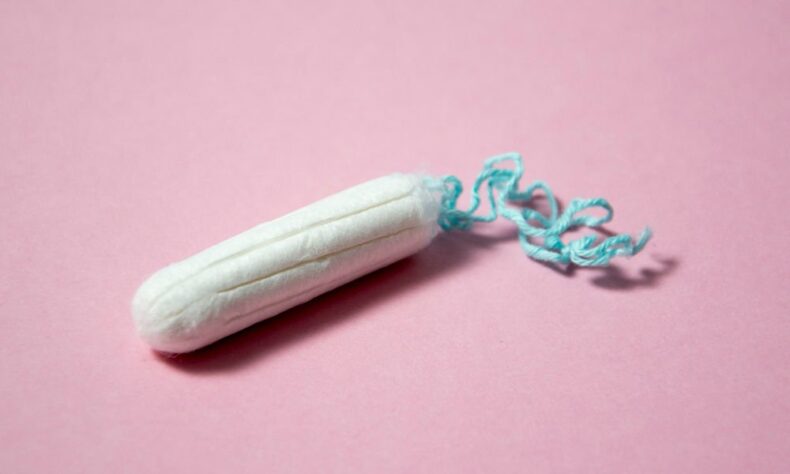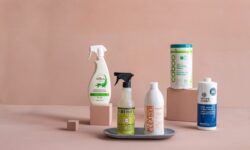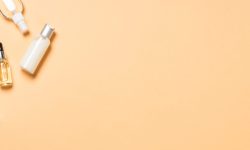At Spud, not only do we care about what you eat, but also the products…
Did you know that on average, a woman will spend approximately 3,500 days menstruating? That’s about nine and a half years.
Yet the conversation around feminine hygiene, especially from a marketing perspective, has mostly focused on communicating to women that even when we’re on our period, we can still achieve anything–and we get it. We know we can still ace the perfect score at the high-dive competition, we know we can still go salsa dancing, and we know that we can still wear white–but what we don’t know, is what the heck is actually in the tampons and pads we reach for every month?
The speculation around the health and environmental impacts of tampons and pads seems to be incredibly low. This is a little nuts when we consider that a woman will use about 10,000 tampons in her lifetime, and that the skin in and around your vaginal area is incredibly permeable. That’s a lot of exposure, and sadly, it’s also a lot of garbage.
THE HEALTH FACTS
The makeup of a tampon is ominous. We get our period; we buy tampons or pads, and we use them. That’s usually as far as the thought process goes. But did you know that certain chemicals within tampons and pads are small enough that they are absorbed into your skin, and then from there they can be absorbed directly into your bloodstream? When you eat something, the enzymes in your saliva and stomach help break down and flush harmful substancesout of your body (though we should avoid putting harmful substances into our bodies whenever possible). But when certain chemicals come in contact with your skin, they can be absorbed right into your bloodstream, and then can be delivered to your other organs.
The ingredients listed below can be found in many of the conventional tampon brand names you might have in your cupboard, and prolonged exposure (for example, a few days a month, every month, for 30 plus years) could have harmful consequences. To reduce risk, switch to an organic tampon brand like Natrel or start using the Diva Cup, where you can be sure you are avoiding exposure to these ingredients.
RAYON, CHLORINE AND DIOXIN
These three ingredients are grouped together because when combined, they create a harmful toxin known as dioxin. Many conventional tampon brands contain rayon, which is a cellulose fibre that comes from wood pulp. When rayon is bleached using chlorine dioxide, to get that sterile-white look, this process creates a byproduct called dioxin. According to the US Environmental Protection Agency, dioxins are “are highly toxic and can cause cancer, reproductive and developmental problems, damage to the immune system, and can interfere with hormones”.
It should be noted that the FDA says that dioxins in contemporary tampons exist at extremely low levels that are hardly detectable, and therefore can be deemed safe. However, dioxin has been singled out as a seriously harmful toxin, and very few studies have been conducted on long term exposure. Even if it exists even in trace amounts within products, tampons inhabit a delicate area with prolonged exposure, so perhaps a better-safe-than-sorry attitude might be applied?
NON-ORGANIC COTTON
The purpose of genetically engineered cotton is to create a product that is resistant to pesticides and herbicides, which could affect the cotton’s growth. The issue here is that this allows more pesticides and herbicides to be sprayed on the cotton, which increases the potential and risk of residue being present in the cotton found in our tampons. When you choose organic, you reduce the risk of this exposure.
FRAGRANCE
Did you know that when a company lists fragrance as one of the ingredients, they don’t have to list what chemicals went into that formula? Thus, potentially harmfulchemicals can be hiding within the guise of fragrance without you knowing it. Best to avoid tampons with these ingredients.
BPA
Even though many plastic products and businesses have been publicly moving away from this ingredient because it has been linked to cancer, many tampons contain BPA in their plastic applicators. BPA is a synthetic estrogen that can act as a hormone disruptor when we are exposed. Hormone disruptors can affect how estrogen and other hormones act in the body by blocking or mimicking them. Because estrogen can cause hormone-receptor-positive breast cancer to develop and grow, many women choose to limit their exposure to chemicals act like estrogen.
SWITCH TO ORGANIC OR REUSABLE
If reducing the amount of harmful chemicals in your life is a priority for you, this is an area that you may not have realized you were missing. To rest easy, switching to organic tampons or pads that are chlorine free, and without an applicator may be something you may want to think about. Besides your health, switching to organic, or to a reusable product like the Diva Cup also eliminates a large amount of waste.
This post isn’t intended to scare you, only to share information. Don’t fret if you’re using tampons that contain these ingredients every once in awhile. Life is busy, and those ad campaigns do have the right idea when they emphasizethat life is too busy to stress over your period. Periods can be celebrated, agonized over, beautiful, and annoying. But however you feel about your period, it deserves some consideration when it comes to health.
While we’re at it–anyone got any natural go-to remedies to soothe cramps?




